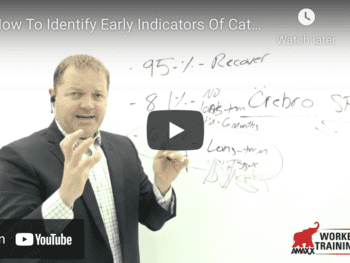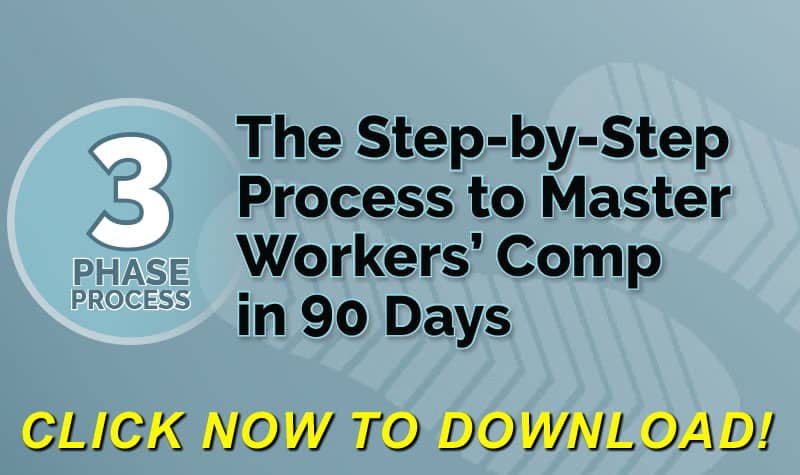
Self-insured employers purchase excess insurance coverage to limit the risk of exposure to catastrophic injuries. This is often accomplished by having a workers compensation policy with a high deductible. Common deductibles for excess insurance are $250,000, $500,000 and $1,000,000. The self-insured employer needs to carefully analyze the amount of risk that is financially feasible before deciding on the deductible for the excess insurance.
The excess insurer has a strong interest in knowing about the workers compensation claims that have the potential to exceed the self-insured employer’s deductible. The insurance contract will normally state the self-insured employer must report to the excess insurer any time the reserve amount on a self-insured employer’s workers comp claim equals half of the deductible amount.
Click Link to Access Free PDF Download
Any Injury With Potential To Exceed Deductible Should Be Reported
The excess insurance contract will call for the self-insured employer to report all “catastrophic” claims, regardless of the dollar amount of the claim. This could include
- Fatalities
- Amputation of a major extremity
- Spinal cord – quadriplegic, hemiplegic and paraplegic injuries
- Brain and brain stem injuries
- Comas
- Burns over more than 25% of the body
- Severe disfigurement and scarring, where applicable
- Loss of eyesight
- Loss of hearing
- Heart attacks
- Strokes
- Multiple surgical interventions
- Rape and sexual assault
- Post-Traumatic Stress Disorder
- Occupational disease claims
- Non-union of bone fractures
- Damage to organs – lungs, liver, heart, stomach, etc.
This list is not all inclusive. Any injury that has the potential to exceed the self-insured employer’s deductible should be reported to the excess insurer. The report to the excess insurer should be completed by the third party claims administrator adjuster or the self-insured employer’s internal claims adjuster as soon as the information becomes available that there is the potential for the claim to exceed the self-insured employer’s deductible. The failure to report the claim timely (within the requirements of the excess insurance policy) could create a situation where the excess insurer denies coverage, or accepts the claim under a reservation of rights which allows them to deny coverage after thoroughly investigating the matter.
Review Specific Reporting Requirements of Excess Insurer
The report to the excess insurer should include the basic information about the workers compensation claim. This includes:
- The facts surrounding the injury
- Compensability
- The nature and extent of the injury
- The medical management of the claim
- The amount already spent on the claim
- The reserves for the future cost of the claim
- Subrogation potential
- Any other offsets of cost
- Any Medicare or Medicaid issues
- The action plan to bring the claim to a conclusion
- The litigation management plan, if applicable
FREE DOWNLOAD: “Step-By-Step Process To Master Workers’ Comp In 90 Days”
The self-insured employer at the start of the excess insurance policy should review with the excess insurer the specific reporting requirements of the excess insurer. A diligent effort by the self-insured employer to comply with the requirements of the excess insurer must be made.
 Author Michael Stack, CEO Amaxx LLC. He is an expert in workers’ compensation cost containment systems and helps employers reduce their workers’ comp costs by 20% to 50%. He works as a consultant to large and mid-market clients, is a co-author of Your Ultimate Guide To Mastering Workers Comp Costs, a comprehensive step-by-step manual of cost containment strategies based on hands-on field experience, and is the founder & lead trainer of Amaxx Workers’ Comp Training Center, which offers the Certified Master of Workers’ Compensation national designation.
Author Michael Stack, CEO Amaxx LLC. He is an expert in workers’ compensation cost containment systems and helps employers reduce their workers’ comp costs by 20% to 50%. He works as a consultant to large and mid-market clients, is a co-author of Your Ultimate Guide To Mastering Workers Comp Costs, a comprehensive step-by-step manual of cost containment strategies based on hands-on field experience, and is the founder & lead trainer of Amaxx Workers’ Comp Training Center, which offers the Certified Master of Workers’ Compensation national designation.
Contact: mstack@reduceyourworkerscomp.com.
Workers’ Comp Roundup Blog: http://blog.reduceyourworkerscomp.com/
©2022 Amaxx LLC. All rights reserved under International Copyright Law.
Do not use this information without independent verification. All state laws vary. You should consult with your insurance broker, attorney, or qualified professional.
FREE DOWNLOAD: “Step-By-Step Process To Master Workers’ Comp In 90 Days”
















